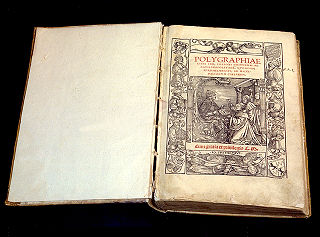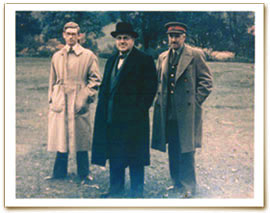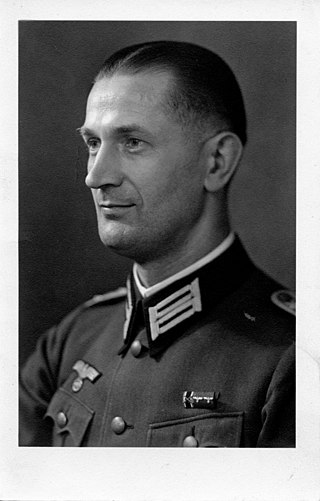
Cryptanalysis refers to the process of analyzing information systems in order to understand hidden aspects of the systems. Cryptanalysis is used to breach cryptographic security systems and gain access to the contents of encrypted messages, even if the cryptographic key is unknown.

Colossus was a set of computers developed by British codebreakers in the years 1943–1945 to help in the cryptanalysis of the Lorenz cipher. Colossus used thermionic valves to perform Boolean and counting operations. Colossus is thus regarded as the world's first programmable, electronic, digital computer, although it was programmed by switches and plugs and not by a stored program.

The Data Encryption Standard is a symmetric-key algorithm for the encryption of digital data. Although its short key length of 56 bits makes it too insecure for modern applications, it has been highly influential in the advancement of cryptography.

In the history of cryptography, Typex machines were British cipher machines used from 1937. It was an adaptation of the commercial German Enigma with a number of enhancements that greatly increased its security. The cipher machine was used until the mid-1950s when other more modern military encryption systems came into use.

William Frederick Friedman was a US Army cryptographer who ran the research division of the Army's Signal Intelligence Service (SIS) in the 1930s, and parts of its follow-on services into the 1950s. In 1940, subordinates of his led by Frank Rowlett broke Japan's PURPLE cipher, thus disclosing Japanese diplomatic secrets before America's entrance into World War II.

Books on cryptography have been published sporadically and with highly variable quality for a long time. This is despite the tempting, though superficial, paradox that secrecy is of the essence in sending confidential messages — see Kerckhoffs' principle.
The known-plaintext attack (KPA) is an attack model for cryptanalysis where the attacker has access to both the plaintext and its encrypted version (ciphertext). These can be used to reveal secret keys and code books. The term "crib" originated at Bletchley Park, the British World War II decryption operation, where it was defined as:
A plain language passage of any length, usually obtained by solving one or more cipher or code messages, and occurring or believed likely to occur in a different cipher or code message, which it may provide a means of solving.
Cryptography, the use of codes and ciphers to protect secrets, began thousands of years ago. Until recent decades, it has been the story of what might be called classical cryptography — that is, of methods of encryption that use pen and paper, or perhaps simple mechanical aids. In the early 20th century, the invention of complex mechanical and electromechanical machines, such as the Enigma rotor machine, provided more sophisticated and efficient means of encryption; and the subsequent introduction of electronics and computing has allowed elaborate schemes of still greater complexity, most of which are entirely unsuited to pen and paper.

Brigadier John Hessell Tiltman, was a British Army officer who worked in intelligence, often at or with the Government Code and Cypher School (GC&CS) starting in the 1920s. His intelligence work was largely connected with cryptography, and he showed exceptional skill at cryptanalysis. His work in association with Bill Tutte on the cryptanalysis of the Lorenz cipher, the German teleprinter cipher, called "Tunny" at Bletchley Park, led to breakthroughs in attack methods on the code, without a computer. It was to exploit those methods, at extremely high speed with great reliability, that Colossus, the first digital programmable electronic computer, was designed and built.

The bombe was an electro-mechanical device used by British cryptologists to help decipher German Enigma-machine-encrypted secret messages during World War II. The US Navy and US Army later produced their own machines to the same functional specification, albeit engineered differently both from each other and from Polish and British bombes.

Thomas Harold Flowers MBE was an English engineer with the British General Post Office. During World War II, Flowers designed and built Colossus, the world's first programmable electronic computer, to help decipher encrypted German messages.
Cryptography was used extensively during World War II because of the importance of radio communication and the ease of radio interception. The nations involved fielded a plethora of code and cipher systems, many of the latter using rotor machines. As a result, the theoretical and practical aspects of cryptanalysis, or codebreaking, were much advanced.
Alfred Dillwyn "Dilly" Knox, CMG was a British classics scholar and papyrologist at King's College, Cambridge and a codebreaker. As a member of the Room 40 codebreaking unit he helped decrypt the Zimmermann Telegram which brought the USA into the First World War. He then joined the Government Code and Cypher School (GC&CS).
Below is a timeline of notable events related to cryptography.
In cryptanalysis, attack models or attack types are a classification of cryptographic attacks specifying the kind of access a cryptanalyst has to a system under attack when attempting to "break" an encrypted message generated by the system. The greater the access the cryptanalyst has to the system, the more useful information they can get to utilize for breaking the cypher.
Military Cryptanalytics is a revision by Lambros D. Callimahos of the series of books written by William F. Friedman under the title Military Cryptanalysis. It may also contain contributions by other cryptanalysts. It was a training manual for National Security Agency and military cryptanalysts. It was published for government use between 1957 and 1977, though parts I and II were written in 1956 and 1959.
The Testery was a section at Bletchley Park, the British codebreaking station during World War II. It was set up in July 1942 as the "FISH Subsection" under Major Ralph Tester, hence its alternative name. Four founder members were Tester himself and three senior cryptanalysts were Captain Jerry Roberts, Captain Peter Ericsson and Major Denis Oswald. All four were fluent in German. From 1 July 1942 on, this team switched and was tasked with breaking the German High Command's most top-level code Tunny after Bill Tutte successfully broke Tunny system in Spring 1942.

Dorothy Toplitzky Blum was an American computer scientist and cryptanalyst. She worked for the National Security Agency and its predecessors from 1944 until her death in 1980.

Ostwin Fritz Menzer was a German cryptologist, who before and during World War II, worked in the In 7/VI, the Wehrmacht signals intelligence agency, later working in that was the cipher bureau of the supreme command of the Nazi party, and later in Abwehr, the military intelligence service of the Wehrmacht. He was involved in the development and production of cryptographic devices and procedures, as well as the security control of their own methods.











